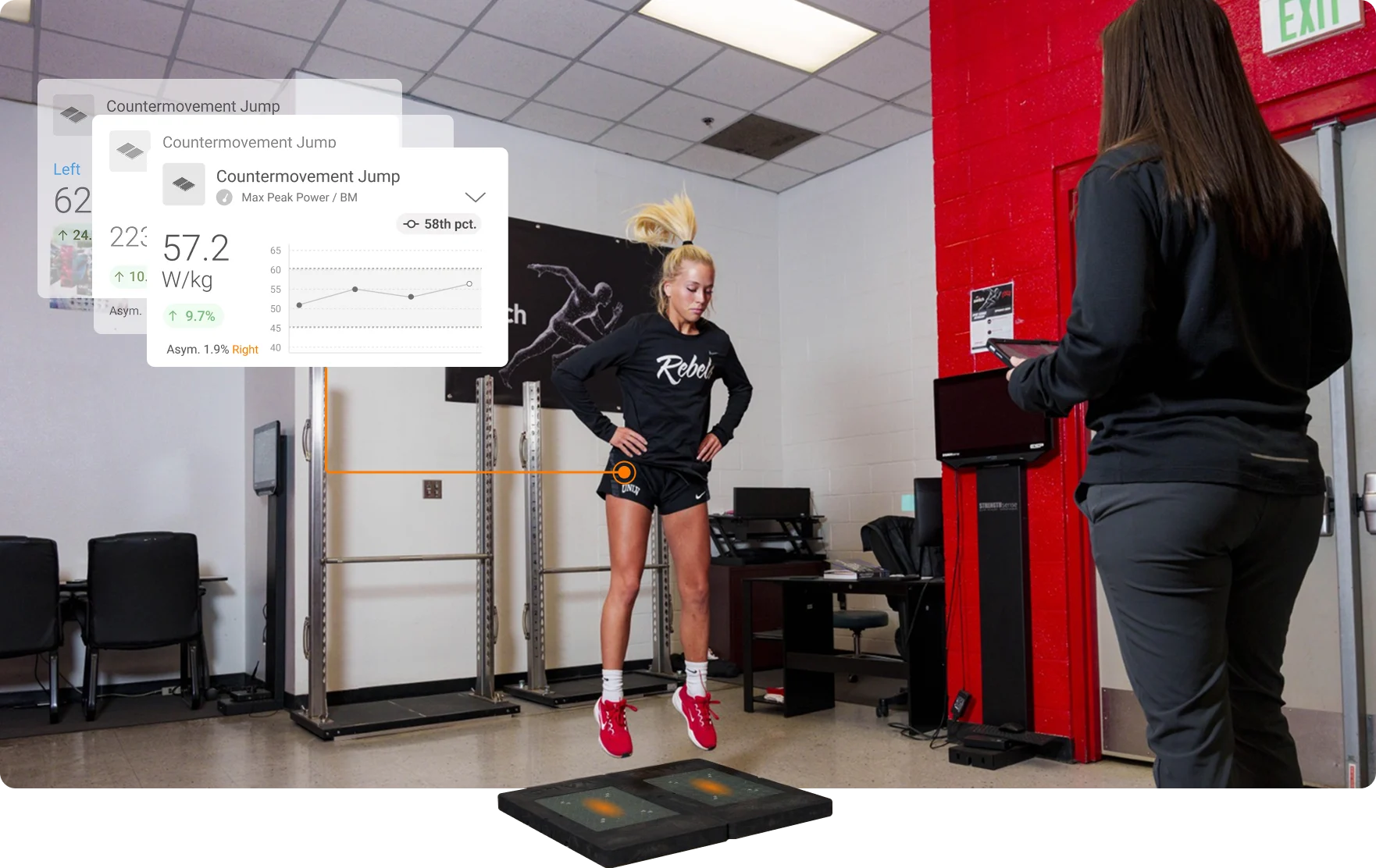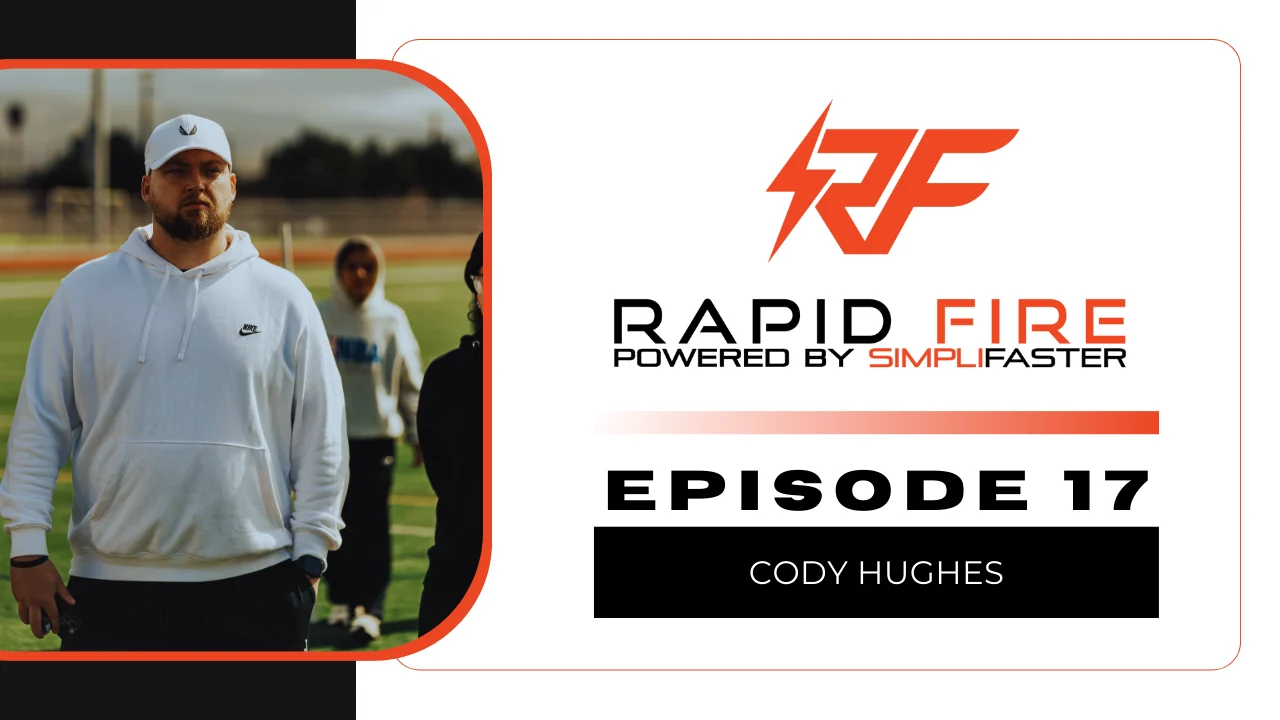Justin Wickard is a native of Scottsbluff, Nebraska. He graduated from Utah State University in 2006, finishing his career as the school record holder in the 60-meter hurdles with a time of 7.84 and as a NCAA Qualifier in the 110-meter hurdles and USA Indoor Championships qualifier. Justin spent 14 years as a college sprints/hurdles coach, with stints at Texas Tech, Chadron State, North Carolina at Chapel Hill, Louisiana Tech, TCU, and the Air Force Academy.
Freelap USA: Tony Wells is one of the greatest high school sprint coaches and is known for his intensity in regard to training methods. While measuring and sprinting are important elements, what else has he helped you with in your training methodology?
Justin Wickard: I wish my coaching career started when Tony was alive. He truly would have been someone I would have sought out as a mentor to learn from. I highly respect what he was able to accomplish with so many athletes at the high school level.
I came across some of Tony’s teaching material from the USATF Development Projects DVDs, where he spoke about training design for the sprints and hurdles. This was my first exposure to the concept of higher training intensity for power development. What left an impression on me was how he constantly questioned the coach’s programming of workouts and the athlete’s understanding of the reason behind the workouts. This teaching method of asking for the reason behind the “why” helped me realize I must be able to give any athlete, parent, or coach the reason behind my training.
This was my first time seeing training broken down in a way where the energy systems are taken into consideration when designing workouts. I also learned how plyometrics and heavy lifting with low reps and sets help develop explosive power in a sprinter, and the positive effects they have on improving the athlete’s overall sprinting capabilities.
This made me look at the demands of the events in sprinting and start designing my training programs around these factors to build the proper base a sprinter needs to be successful. He covered the concept of stride length and stride frequency, and how they can be measured and manipulated to affect sprinting. This is something I personally do now within my own training methodology.
Freelap USA: The college and high school levels are different animals. How do you define elite levels at each phase of a sprinter’s career? And how do you evaluate coaching programs, since you have experience working with both levels?
Justin Wickard: In my opinion, many people define elite levels in a way that fits their own objectives or standards that they perceive as elite. My definition of elite level for high school is this: As a sprinter, if you are nationally ranked top 40 in the sprinting events and are able to make finals at a national track meet, I consider that an elite level. If you are in a program that does not compete in any of those national high school meets, then elite standards might be set based on your state meet results and the times it usually takes to win state. Each state will dictate these standards.
As a sprinter, if you are nationally ranked top 40 in the sprinting events and are able to make finals at a national track meet, I consider that an elite level. Share on XFor example, the state champion for Nebraska or Wyoming will have different times compared to the times it takes to win state in places like California, Texas, and Florida. In Nebraska, if an athlete runs 14.0 flat in the 110-meter hurdles, they will be ranked in the top 10 of all time. That result would not come close to making the all-time list in other states. Therefore, I must define elite-level sprinting based on where the runner is nationally ranked in the events.
When it comes to college, there are multiple divisions in track and field. Within those divisions, there are different standards for the times an athlete needs to be considered an All-American. Some have sprint times that allow sprinters to qualify for USA Championships and have the possibility to make a USA team. If you qualify to participate in a national championship, then you are considered elite. For example, in Division 1 track and field, you are not at the elite level if you are a male 100-meter sprinter and not running 10.1/11.3.
I consider a successful program, at both levels, to be one that continuously produces elite sprinters. These programs also share similar foundational and fundamental training that targets the entire range of physiological and biomechanical demands of the sprint events. They do not neglect certain aspects of training that are important to building elite sprinters.
Freelap USA: What mistakes have you seen with high school development of men’s hurdlers that seem to haunt college coaches later? What can be done to ensure an athlete performs better at 39 inches while being developed for the long run at 42s?
Justin Wickard: Many high school hurdlers are not being trained as sprinters, and then there is not a lot of emphasis on creating proper take-off positions into the hurdle. One of the biggest mistakes I see is high school hurdlers doing a lot of stationary drills that simply do not carry over to the hurdle velocity demands that happen in a race.
Lastly, I see hurdlers not working on spacing the hurdles properly in practice to develop the hurdle rhythm that they need to run fast times. Establishing a rhythm and maintaining that rhythm are critical. Hurdlers should work on having a good take-off position, mark the track where the proper take-off distance should be, and lastly not be afraid to lower the hurdles below 36 inches.
One of the biggest mistakes I see is high school hurdlers doing a lot of stationary drills that simply do not carry over to the hurdle velocity demands that happen in a race. Share on XI always recommend jamming the hurdles in. This will force them to sprint between the hurdles at higher velocities and achieve hurdle unit times of 1.08 seconds or better. If these basic areas cannot be ingrained at the high school level, then the 42s will simply be a nightmare. They will have an extremely hard time adjusting to the 42s.
I also want to inform all male hurdlers who are going to college that if they expect to run faster as a college freshman than they did as a high school senior, they will end up very frustrated. It takes time to adjust to the 42s even if you were an elite high school hurdler. If you can come close to matching your high school PR’s, then that is a good freshman year for you.
Freelap USA: Plyometrics are not for everyone, as each athlete has their own anatomical and neuromuscular qualities. How do you train groups of athletes who have diverse abilities in jump training?
Justin Wickard: I have always believed that plyometrics play a big role in improving a sprinter’s ability to generate force and elastic capabilities. Honestly, this is an area that has left me in shock at times when I have been around programs with elite sprinters and plyometric training is not in the training program. I think, “Wow! Even without plyos, they are running amazing times!” This makes me realize that there are multiple ways to get the job done.
When it comes to implementing plyometrics into a program, I start with the basics of doing a rudimentary series of small jumps, low-impact plyos, standing long jumps, and standing triple jumps in the fall. All of our contacts are counted and then slowly increased as the season progresses. After we complete a training cycle, I throw one or two more plyos, like double leg bounds or static hurdle hops, into the training plan.
When we progress into higher-impact plyos, I break my athletes up based on how I see they are wired when it comes to their CNS. For those who are very wired and explosive in nature, I keep the volumes of high-impact plyos low, and the time before their next plyo sessions is usually 72 hours. For those who are not as wired, I usually stay with the basic short jump plyos and long bounds and utilize medball throws a lot.
When we get into season, I usually keep one day a week of plyos in our training plan and ensure they fit our training theme for that day. For those athletes who are more CNS-driven, I back off almost completely from plyos when we are in the main part of our season. The athletes who are not as CNS-driven continue doing plyos once a week until about five weeks out from our championship meet to ensure I am keeping their power levels up.
Freelap USA: You have been doing a lot of remote coaching due to COVID-19 and the growth of video and training technology. What is the #1 reason parents are moving toward correspondence coaching when so many local coaches are available?
Justin Wickard: In my time as a college coach, I was not able to do this a lot because of NCAA rules. However, now that I am transitioning from college coaching into the private coaching sector, I will be offering remote coaching to athletes. Technology has grown over the years, with mobile applications and how athletes consume almost all their information from their mobile devices, and this is a technology a coach must incorporate.
Thanks to Dartfish mobile, Coach’s Eye, and many more, I can easily give feedback and guidance to any athlete I coach from anywhere in the world. This is a great way to provide correspondence for any athlete looking for help in their training. They can upload their own video while practicing, and I can then use any one of these mobile coaching video analysis tools to give them feedback by providing voice dictation and drawing tools to show them things they are doing well and things we need to improve on.
Thanks to mobile coaching video analysis tools, I can easily provide any athlete in the world with the exact same workouts they would do with me in person. Share on XI can easily provide any athlete in the world with the exact same workouts they would do with me in person. A mobile app allows me to show them videos with explanations of drills and workouts. They can then record themselves doing that drill/workout and upload the video back into the mobile app for me to give them guidance on. I have even done Zoom calls with an athlete or coach so I can watch them and instantly give feedback like I was there in person. With this technology and these capabilities, athletes who are not satisfied with the local coaches in their area can now easily seek out a coach anywhere in the world to get help.
Since you’re here…
…we have a small favor to ask. More people are reading SimpliFaster than ever, and each week we bring you compelling content from coaches, sport scientists, and physiotherapists who are devoted to building better athletes. Please take a moment to share the articles on social media, engage the authors with questions and comments below, and link to articles when appropriate if you have a blog or participate on forums of related topics. — SF






